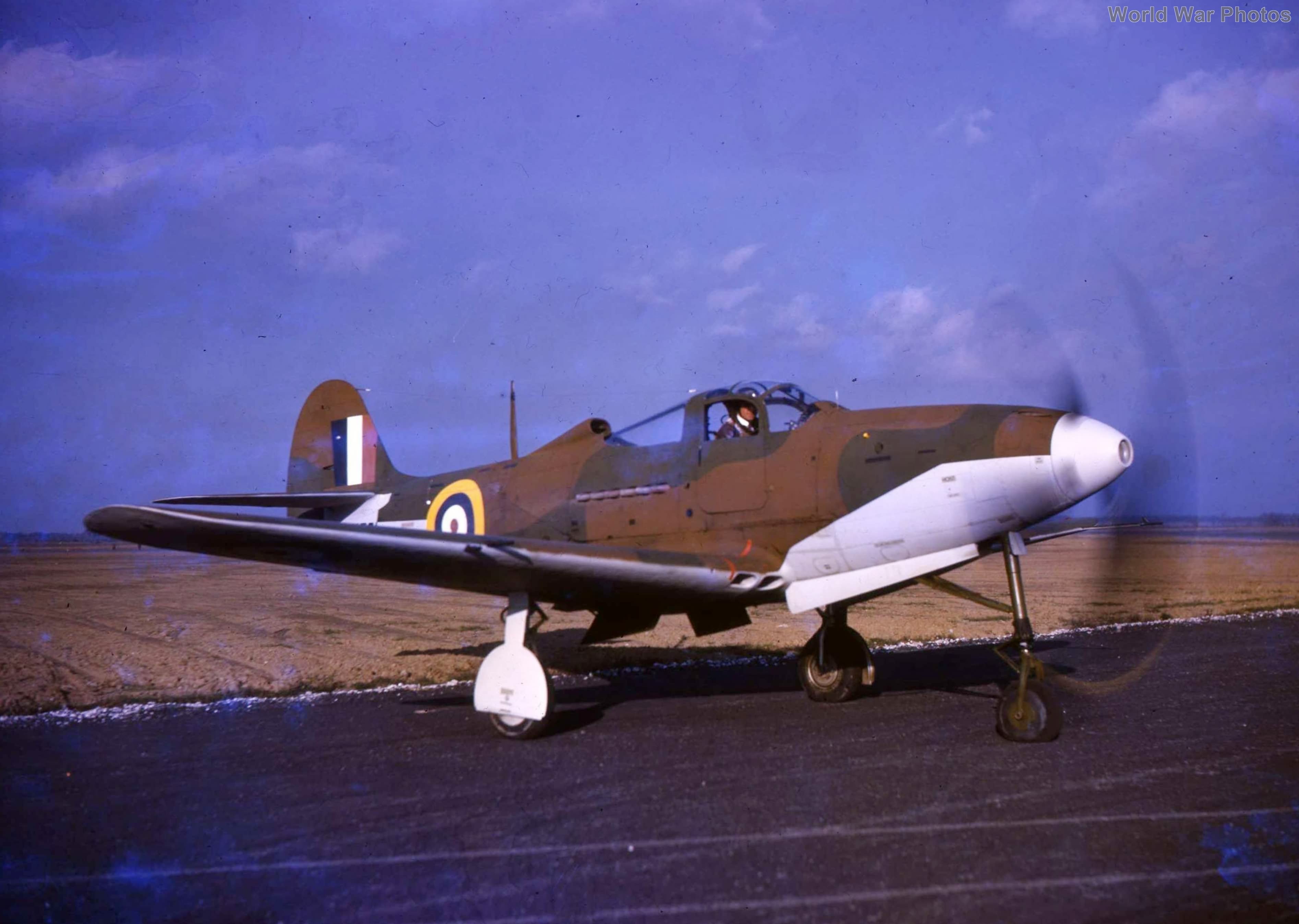In April 1940, the French government placed an order for 200 Bell P-39 Airacobras, anticipating the aircraft’s promising performance. However, following the fall of France to Germany, none of these aircraft were delivered. The British Royal Air Force (RAF) took over the French order and incorporated it into their own, adding it to their existing order for 475 Bell Model 12s. The RAF made several modifications to the Airacobra to better suit their needs, and they initially intended to name the aircraft “Caribou” before deciding to retain the American name, “Airacobra.”
British Specifications and Modifications:
- Cannon Replacement: The RAF requested that the Airacobra’s standard 37-mm cannon be replaced with a Hispano 20-mm cannon. Although this cannon fired a smaller and lighter shell, it offered a higher muzzle velocity and a faster rate of fire. The aircraft carried 60 rounds for this weapon.
- Machine Guns: Instead of the original armament configuration, the RAF opted for two .303-caliber machine guns in the nose and added four additional .303-caliber guns in the wings.
- Engines: The British Airacobra Is were equipped with the Allison V-1710-35 engine, which produced 1,150 horsepower and featured twelve exhaust stubs on each side. Despite expectations, this engine lacked a supercharger, leading to a top speed of only 367 miles per hour, significantly below the anticipated 400 mph.
RAF Disappointment and Order Cancellation:
The Airacobra’s performance fell short of RAF expectations, primarily due to the absence of the turbo-supercharger, which had been removed at the direction of the U.S. Army. This decision significantly reduced the aircraft’s high-altitude capabilities, which were crucial for the RAF’s intended use as an interceptor. The RAF received and tested a few Airacobra Is, assigning them to No. 601 Squadron. However, they quickly grew disillusioned with the aircraft, citing its underwhelming performance as the reason for canceling the remaining order. Despite their official stance, it is widely believed that the RAF used this issue as a convenient pretext to back out of the contract.
Reassignment and Use by Other Nations:
Soviet Union: The British cancellation of the Airacobra order did not spell the end for these aircraft. Instead, 212 Airacobra Is were sent to the Soviet Union, where they were put to effective use in ground-attack roles against German forces. The success of the Airacobra in Soviet service led to further requests for P-39s and eventually for P-63 Kingcobras.
United States Army Air Forces (USAAF): With the United States entering World War II, the USAAF faced an urgent need for combat aircraft. They took delivery of 179 Airacobra Is originally intended for the RAF and designated them as P-400s. These aircraft were deployed quickly, with over 100 being sent to Australia to bolster American forces in the Pacific. Due to the urgent demand, many P-400s entered combat still bearing their British camouflage and serial numbers. The P-400s were used by several fighter groups, including the 8th Fighter Group in Australia and New Guinea, the 35th Fighter Group in New Guinea, and the 347th Fighter Group on Guadalcanal.
